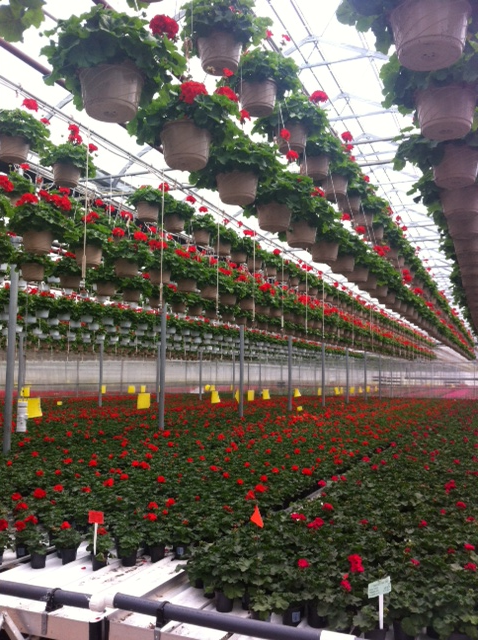Solar radiation and its effect
Solar radiation reaches the earth as a wide spectrum, 250 nm – 2800 nm. As can be seen in the following chart, this spectrum can be divided to three major ranges:
I- UV range: 250-400 nm
II- Visible range: 400-700 nm
III- Infra red range: 700-2800 nm

Each range has a different effect on the plastic film, plant, insects and bees:
I- Infrared radiation : has the weakest radiation and is expressed as heat. This radiation has no effect on the plastic or the insects in general.
II- PAR range (visible light): the plants use the visible light (PAR range) for the photosynthetic process, so it has a high influence on the plant behavior. On the plastic film it has no influence.
III- The UV range: has the highest and most aggressive energy. It has huge effect on the plastic film, insects and has effect on the red pigment development in plants.
a. Effect on the plastic: the UV irradiation damages the chemical bonds in the plastic and as result the plastic will degrade overtime. ( UV Degradation) In order to avoid early degradation UV stabilizers are used. There are many factors that influence the films’ UV stability, like UV content and type, films’ thicknesses, climate, agrochemicals and others.
b. Plants: In plastic ilm the UV irradiation transmission can be controlled depending on the additives that is used, it’s possible to block the UV irradiation up to 380 nm totally as in anti-virus or anti-blackening films, semi-blocking films up to 350 nm or UV opened films with the highest transmission at the range.
The UV irradiation has a effect on the red pigment development. In some cases, like in red roses, the UV irradiation should be block to avoid blacking while with Bi-color roses, red lettuce and Nectarine maximum transmission in the UV range is required.
Red Roses
Bi-color Roses

c. Effect on the Insects: in order to limit virus’s infection in the greenhouse, insects should be limited in the greenhouse. The insects need the UV irradiation to recognize the plants, thus, by blocking the UV irradiation the virus carring insect presence in the greenhouse will be limited and the insects’ reproduction will be limited also leading to less infections.

d. Effect on the Pollinating bees: The Pollinating bees (honey bees and Bumble/Bombus bees) are sensitive to the UV range mostly and partly the visible light as in the following draw:

the effect on the honey bees is more dramatic than the Bumble bees. The honey bees fly much higher that the Bumble bees and when the UV irradiation is fully blocked the bees fly toward the plastic therefore there pollination efficiency drops, trials were made in Israel, we found that Bumble bees can work perfectly under films that block the UV irradiation, while the honey bees activity was very low under theses film and very active under films have high transmission at the UV range.
In Politiv we produce wide range of films with different properties, all designed according to the customer requirements and needs.








